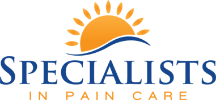Tele-Medicine: Not Ready for Prime Time
July 22, 2020If there is anything useful that has come out of the Covid19 pandemic, it is the widespread acceptance of tele-medicine. Government and private insurers jumped on this bandwagon early in mid-March and are extending tele-medicine services out to September 30th in most instances. Yet, of course, this does not mean that this modality of seeing patients was a success, but in a crisis, we do what we can do just to get by.
In the media, tele-medicine is “techy” and all the rage and represents a “new age” of medicine, but our experience with this modality of delivering care has been fair to poor. This does not mean we had trouble adopting this new modality. We didn’t. In fact, in our addiction medicine practice we have been using tele-Medicine very successfully for over a year, so it was relatively easy for us to convert our day to day foot traffic in the pain clinic into tele-medicine visits. Subsequently, in the following 3 months of April, May and June, we had record numbers of encounters. That’s right. Because of tele-medicine, we saw more patients than we ever have in the young history of our practice!
So despite our success, why would I say that tele-medicine is not ready for prime time? It is a simple answer: the patients are not ready for tele-medicine. When we do tele-medicine in our addiction clinic, we control the technology. It is our office in Louisville connecting to our patient sitting in our office in Elizabethtown. We have the right hardware; we know how the software works; we have the proper internet connection with the proper speed, and so forth. During Covid19 and over the past 3 months when we connected directly to patients, it was an absolute mess. Many tele-medicine appointments were converted to telephonic solely because the patients could not figure out the technology. They struggled with everything.
First, they struggled with the software. We have been using Doxy.me as our tele-medicine vendor for over a year for the very reason that the patients don’t have to do anything but click on a link. Once they click on the link, the software will do the rest. I get it. It isn’t Facebook. Therefore, patients struggled. Second, they don’t have good cell phones or computers. Third, they don’t have good internet connections; cell connections are not sufficient for tele-medicine. Fourth, many patients do not have data plans.
So we prospered from tele-medicine because we could do more with less, which as you all know is a way to make it in modern medicine. I don’t remember the last time someone wanted to give me a pay raise, but we do try to make ourselves more efficient all of the time. Tele-medicine is a great tool when we can control technology. When we need to rely upon the patient to make a good connection, it was less than optimal, and clearly not ready for prime time.
Specialists in Pain Care is open for business and has been open for business! We still offer tele-medicine to our at risk patients, but patients appear to be happy just to get out of the house and come visit their doctors.



